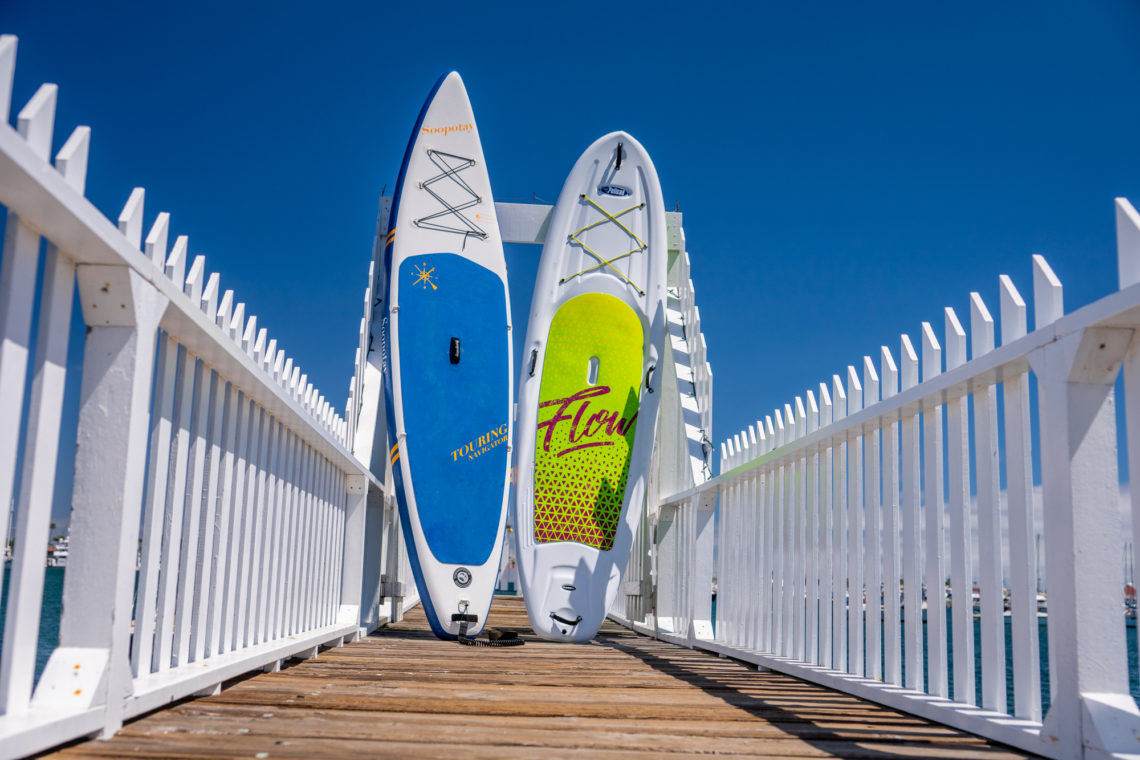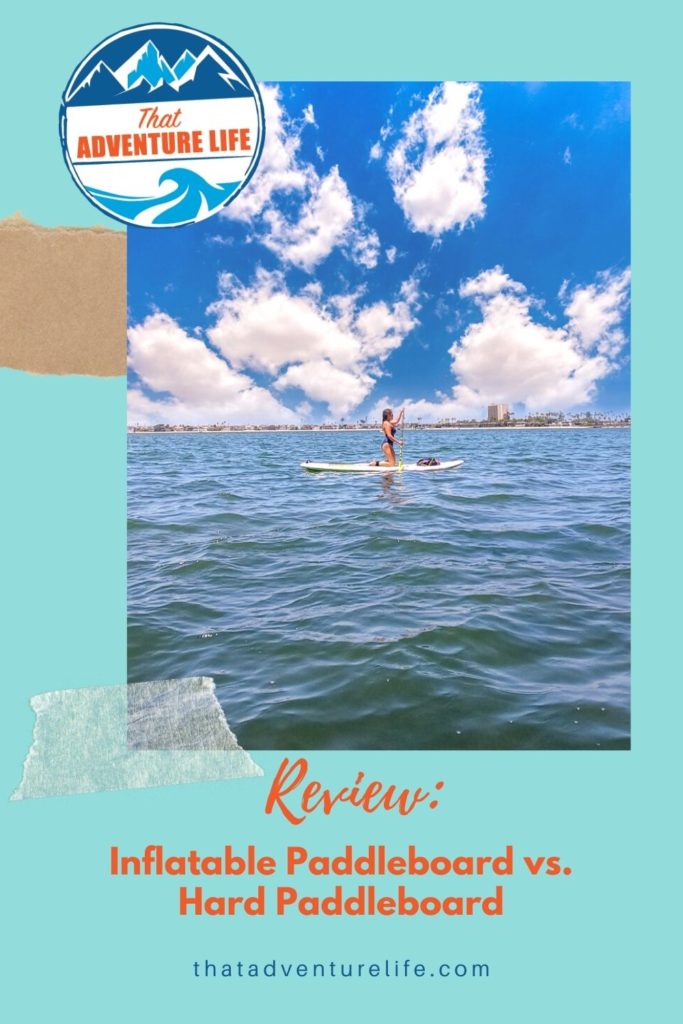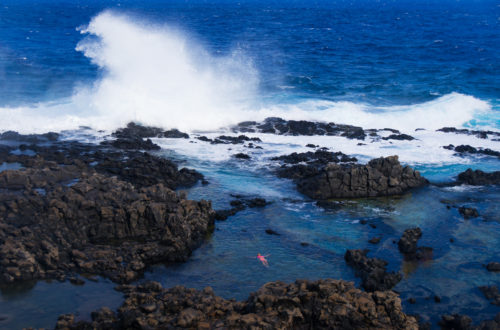When buying a paddleboard (SUP), there are a lot of choices to make. You have to figure out how long of a board you want, whether you want a faster board or something more stable, etc.. There are a lot of brands and options out there. One of the main considerations that you need to make is the choice between inflatable paddleboard vs. hard paddleboard. They both have their pros and cons. To help you make an informed decision, we tested out both options using multiple metrics. Again, these are just our opinions. Just because something works perfectly for some people doesn’t mean that it will work for the others. This is not so much a review of the 2 different boards that we are using, but more general observation of the two board types.
Bang for the buck
Winner: Inflatable boards
One huge win for the inflatable boards is that there are some really great kits out there. Included in these kits are the air pump, paddle, and everything that you will need for a day of fun on the water (except for a personal flotation device – PFDs). Hard boards obviously don’t need the pump and some of the other items, but usually, you have to buy the paddle separately,
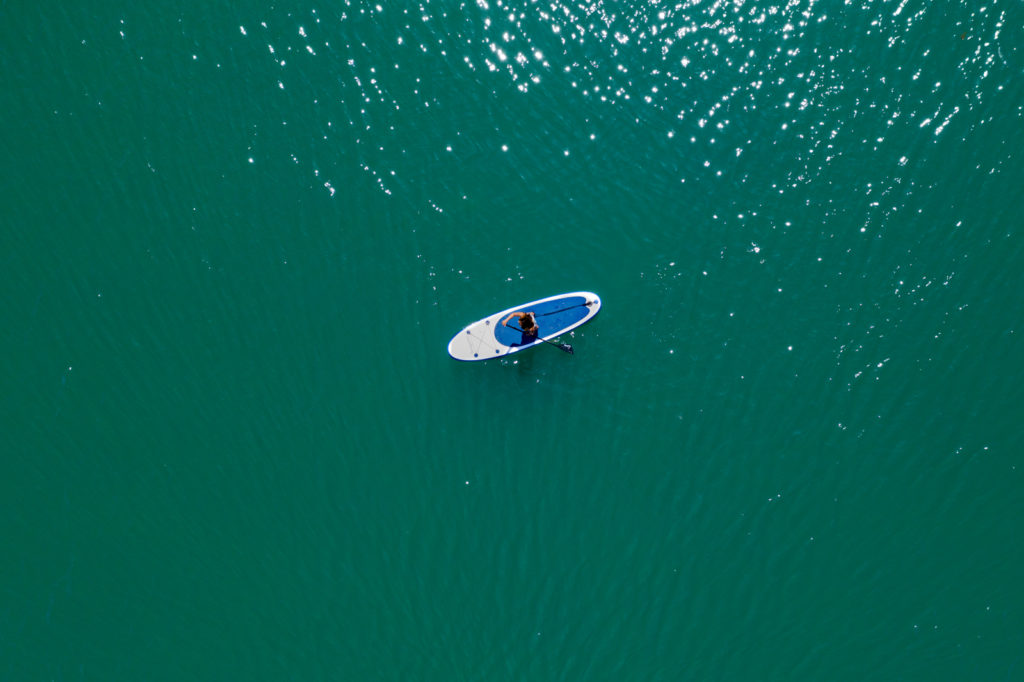
Transporting
Winner: Inflatable boards
Between inflatable paddleboard vs. hard paddleboard, this is an easy win for the inflatable. You don’t need any special car racks or tie-downs to transport them. It’s easier to take them out using any size car or possibly even on a bike. One other nice feature is that a lot of inflatables come with a backpack that holds pretty much everything but your PFDs. All you have to do is throw the backpack in the car and you are ready to go. They are also a lot easier to take on an airplane if you want to bring them on your trips.
On the other side though, once you get to your location, it is nice to just grab your board off of the roof and hit the water. If you use a hand pump to inflate your board, it can be quite a workout. It’s not super fun wearing yourself out before you even touch the water. There are electric pumps out there that can save you all the work, however, the good ones can be quite expensive.
Getting it down to the water
Winner: tie
While hardboards can be quite a bit heavier than their inflatable counterparts, they are easier to carry on windier days. Inflatable boards get blow around a lot when it’s windy out. Maybe it is a sign of things to come. If you can barely get it down to the water, it might not be a great day to paddle.
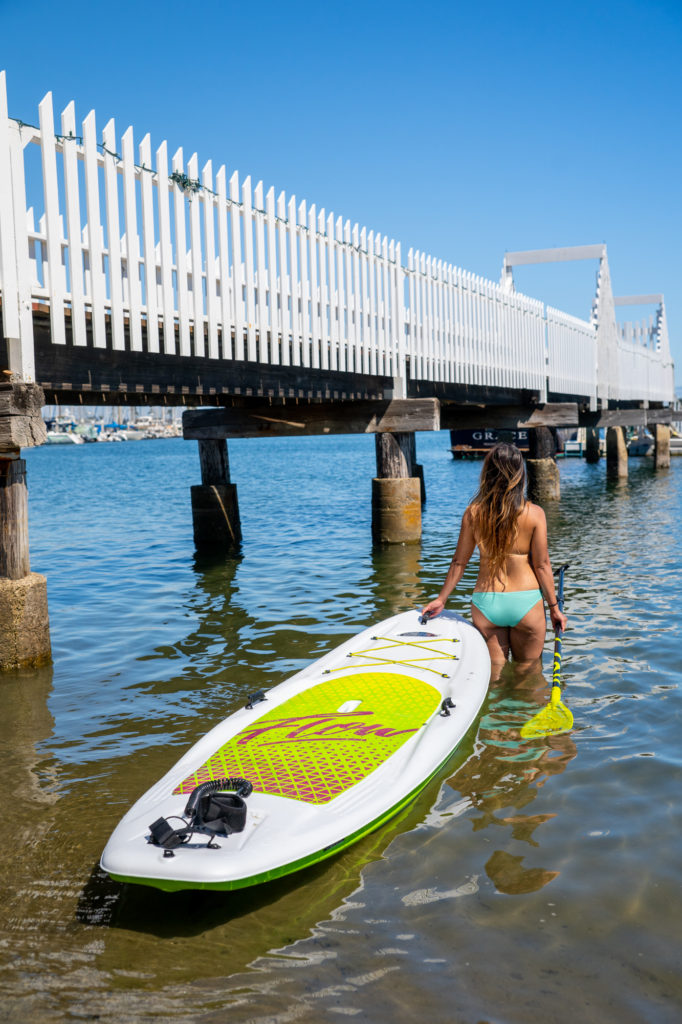
Weight
Winner: Inflatable boards
This is, of course, a case by case basis. It all depends on the materials that your particular board is made of. However, generally, hard boards are somewhere around 2 times the weight of inflatable. A lot of inflatable boards weight somewhere in the low to mid 20 pounds range, while hard boards can weight anywhere from 30 to 50 pounds.
This difference in weight between inflatable paddleboard vs. hard paddleboard also affects their performances in the water. While inflatables will be easier to get down to the water, which is why they got the point in this category, heavier boards can feel more stable in the water. The weight will give boards more authority when cutting through the water, giving you more distance per paddle.
Performance
Winner: Hard boards
This category is one of the most important ones, and the hard boards hand down perform better. Hard boards tend to have less drag, which means you get a lot more glide for your effort. They also more stable when cutting through choppy water. It seems like the inflatable boards almost amplify the choppy water because they jiggle every time they hit a wave. The flex of the inflatable can make the board feel less responsive as well. In my opinion, the hard boards ride a lot smoother.
Some of the more expensive brands of inflatable boards come with multiple layered PVC construction. These boards are a fair amount heavier but have a lot less flex. Therefore, they will be more similar to a hard board on the water.
Hard boards are also a much better choice if you plan on surfing or going for longer distances. The rigidity of the hard boards will give you a lot more control.
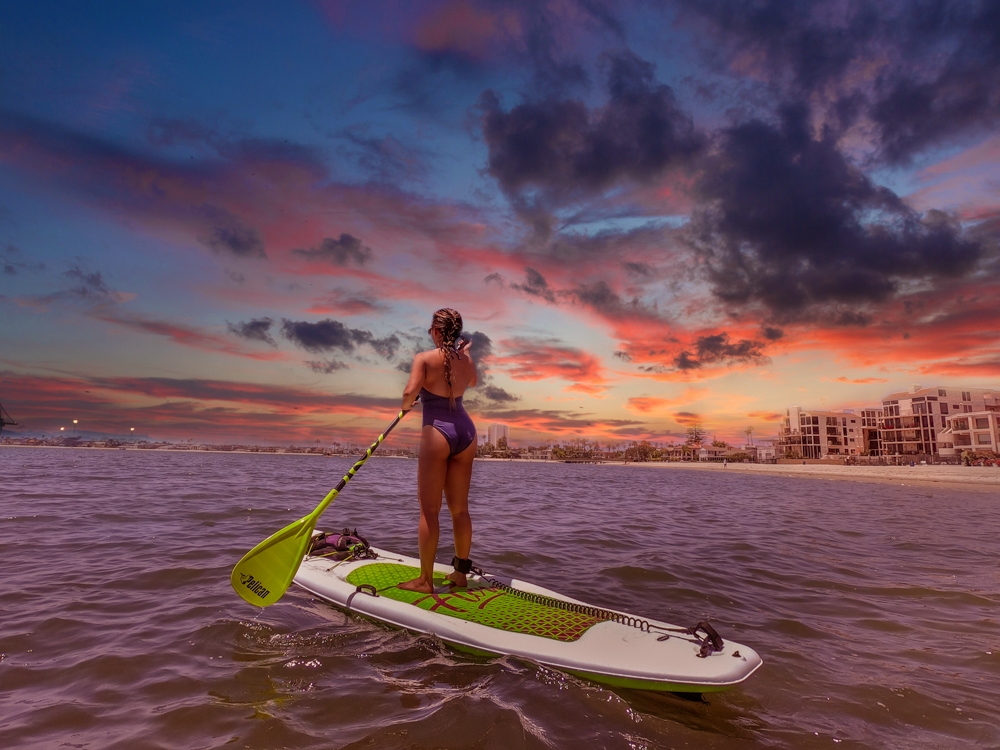
Performance in the wind
Winner: Hard boards
Hard boards are typically sleeker with much thinner rails, therefore they sit lower in the water. This means that there is less surface area for the wind to hit and affect the direction that you are pointing in. Vy was on one of our inflatables one time when a sudden wind gust kicked up. You wouldn’t think that another inch or two above the water would be a huge deal, but I thought she was going to blow away. Since she is tiny and a lot lighter than I am, it was also hard for her to control the boards during a windy day. If you are smaller, hard boards will definitely give you WAY more stability.
Durability
Durability – Winner: inflatable
This one might be a little bit surprising to some. If you are paddling along rocky shorelines or down rivers, the inflatable might be able to take more abuse than fiberglass boards. This is partially due to the board being able to flex and bend if it hits something. The inflatable gets the point in this category but I wouldn’t run full speed into pointy rocks to test it.
The downside of the inflatable’s durability is when they fail, they fail big time! When running between the ranges of 15-18 psi, a puncture is going to be loud. It also goes flat pretty fast. If you are out in the open ocean when it happens (not likely), it could leave you stranded. Some inflatables have multiple chambers so they don’t go completely flat.
Our Pelican boards are a bit of a happy medium. They are made out of the same RAM-X material that they use on their awesome kayaks, so it can put up with a lot of abuse.
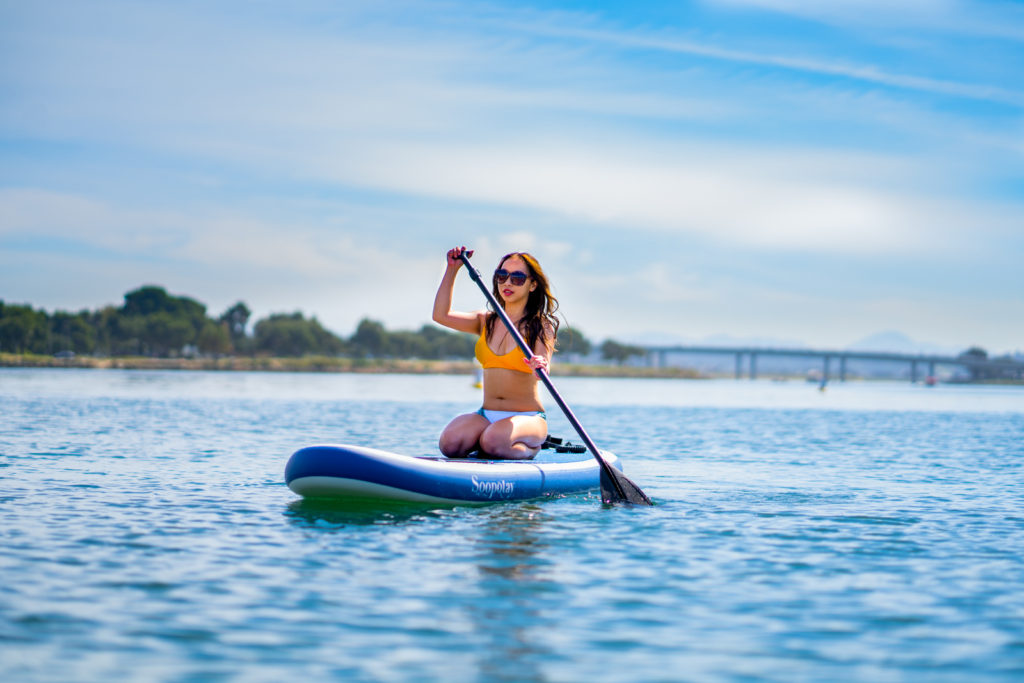
Storage
Winner: tie
Hard boards obviously take up a good amount of space. While it is true that deflated boards take up less room, we have heard that it isn’t good for your board if you leave it deflated and rolled up for long periods of time. This means you might need to leave it inflated in the offseason. Inflated boards take up the same amount of space as the hard boards if not a little more because they are thicker. You also need storage spaces for the pumps and accessories.
Conclusion
In the battle between inflatable paddleboard vs. hard paddleboard, inflatables end up winning by a score of 4-2 (with 2 categories being a tie). However, if performance and stability are your top priorities, I would get the hard board.
For us, we prefer the hard boards because transporting them isn’t an issue for us. Since Vy is tiny, the hard boards are safer, easier, and more stable for her to be on the water.
Inflatable boards aren’t bad at all. Every time we are out for a paddle, we come across many people that use and love them. Whatever you decide on, just learn its strengths and weaknesses. This will ensure that you stay safe and always have a great time on your water adventures.
If you’re looking for some cool spots to bring your paddleboards or kayaks, check out Sand Harbor in Lake Tahoe, Shoshone Falls in Idaho, Mono Lake of the 395.
Happy Adventuring. Don’t forget to follow us on Instagram, subscribe to our Youtube channel, and sign up for our newsletter! Also, check out our Recommended Gear section for gear that you might need for your next big adventure.

